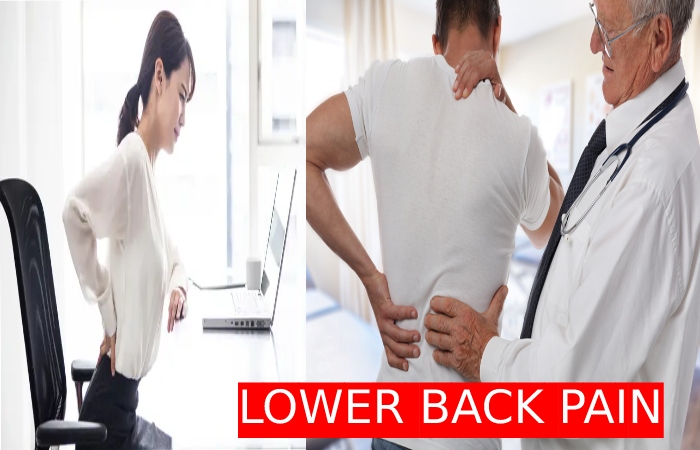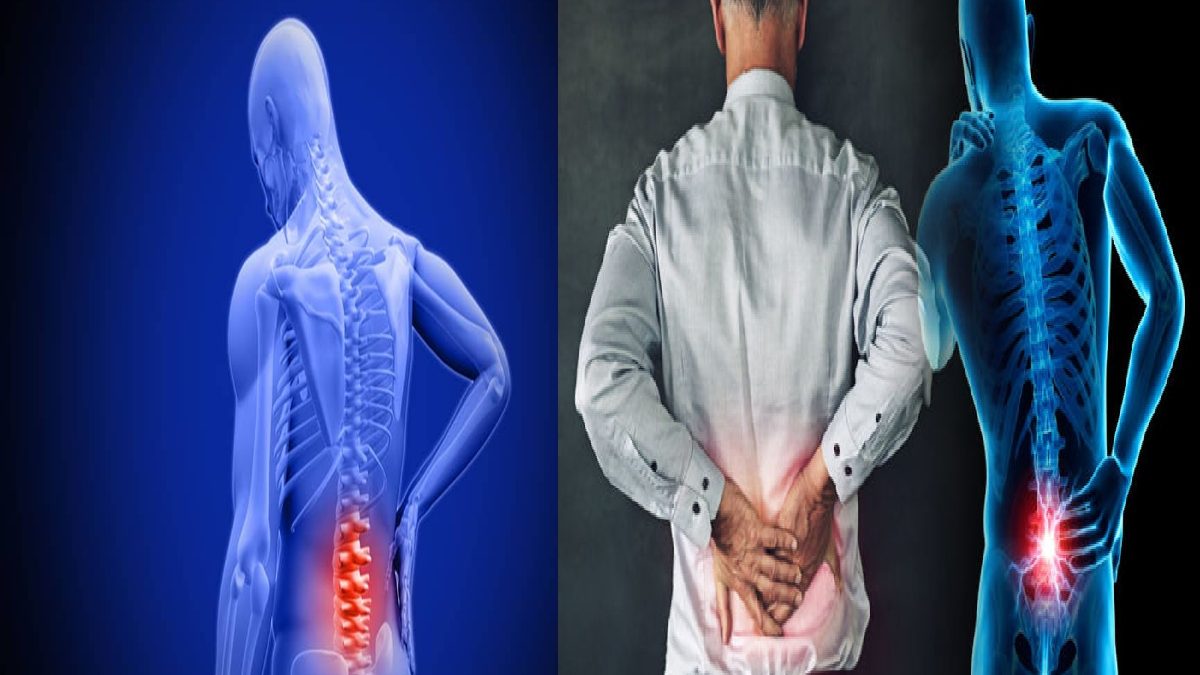Table of Contents
Lower Back Pain – Meaning
Lower back pain is widespread. It can result after a strain (injury) to strengths or tendons in the back. Other causes include arthritis, structural difficulties and disk injuries. Pain often gets improved with rest, physical therapy and medication. Condense your risk of low spinal pain by keeping at a healthy weight and staying active.
The symptoms of Lower Back Pain
Symptoms of low back pain can originate abruptly or look slowly. Occasionally, pain occurs after a specific event, such as bending to pick something up. Other times, you might not see what produced the pain.
Pain may be shrill or dull, and achy, and it can discharge to your bottom or down the spinal of your legs. Pain is often worse in specific locations and becomes better when lying down. If you strain your back during an activity, you might hear a “pop” when it happens.
Other Symptoms of Lower Back Pain Contain
Stiffness: It may be rough to move or make straight your back. Getting up from a seated location may take a while, and you might feel like you need to walk or stretch to loosen up. You may notice a reduced variety of motion.
Posture Problems: Many people with spinal pain find it hard to stand square. You may stand “bent” or bent, with your trunk off to the side somewhat than associated by your back. Your lower back may look flat instead of curved.
Muscle spasms: Muscles in the lower back can spasm or contract uncontrollably after a strain. Muscle spasms can cause risky pain and make it difficult or impossible to stand, walk or move.
Causes Lower Back Pain
Many injuries, conditions and illnesses can cause lower back pain. They comprise:
Strains and sprains: Back straining and sprains are the most mutual cause of back pain. You can injure muscles, tendons or tendons by lifting approximately too heavy or not exciting securely. Some people strain their back by sneezing, coughing, meandering or winding over.
Breaks: The bones in the back can break through a chance, similar to a car crash or a fall. Certain conditions increase the risk of fractures.
Disk problems: Disks cushion the vertebrate. Disks can bulge from their place in the spine and press on a nerve. They can also tear. With age, disks can get flattered and proposal less guard.
Structural problems: A spinal stenosis condition happens when the back pillar is too thin for the spinal cord. Something pinching the back cord can cause severe sciatic courage and lower back pain. Scoliosis can lead to pain, stiffness and effort moving.
Arthritis: Osteoarthritis is the most common type of arthritis to cause lower back pain. Ankylosing spondylitis causes lower back pain, inflammation and stiffness in the spine.
Disease: Spine tumours, infections and several types of cancer can cause back pain. Other conditions can cause back pain, too. These include kidney stones and abdominal aortic aneurysms.
Spondylolisthesis: This condition causes the backs in the spine to slip out of place. Spondylolisthesis leads to low back discomfort and often leg pain as well.
Lower Back Pain Diagnosed
Your breadwinner may order imagination education to check for broken bones or other injuries. These studies help your provider see clear pictures of your spines, disks, muscles, ligaments and tendons. Your worker will ask about your indicators and do a physical exam.
Your provider may order
MRI uses magnet and radio waves to create pictures of bones, muscles, tendons, and other soft tissues.
CT scan uses X-rays and a computer to make 3D images of bones and soft tissues.
Electromyography (EMG) tests worries and muscles and checks for neuropathy that can cause tingling or impassiveness in your legs.
Depending on the cause of pain, your worker may also order blood or urine tests. Blood tests can detect genetic indicators for some situations that cause back. Urine tests check for food stones, which cause pain in the flank
Healthcare Provider About Lower Back Pain
The lower back usually gets improved with rest and relievers. A Spinal that doesn’t go away may signify a more severe complaint.
See your provider if you have
Pain that doesn’t get better after about a week of at-home care.
Tingling, numbness, weakness or in your buttocks or legs.
Severe or muscle spasms interfere with your normal activities.
Fever, weight loss, bowel or bladder problems or other unexplained symptoms.
The Treatments for Lower Back
The lower back usually gets better with rest, ice and over-the-counter relievers. Staying active increases blood flow to the area and helps you heal. After a few days of rest, you can start to get back to your normal activities.
Other treatments for the lower back depending on the cause. They include
Medications: Your provider may recommend nonsteroidal anti-inflammatory drugs (NSAIDs) or prescription drugs to relieve. Other medications relax muscles and prevent back spasms.
Physical therapy (PT): PT can strengthen muscles to support your spine. PT also improves flexibility and helps you avoid another injury.
Hands-on manipulation: Several “hands-on” treatments can relax tight muscles, reduce and improve posture and alignment. Depending on the cause, you may need osteopathic manipulation or chiropractic adjustments. Massage therapy can also help with back relief and restore function.
Injections: Your provider uses a needle to inject medication into the area causing. Steroid injections relieve and reduce inflammation.
Surgery: Some injuries and conditions need surgical repair—several types of surgery for the low back including many minimally invasive techniques.
Conclusion
Millions of people live with a low back. Stiffness and limited movement can major impact quality of life. But you may be able to avoid the lower back by maintaining a healthy weight and staying active. Several treatments can relieve. help you move better and get more out of life. Talk to your provider if the back doesn’t go away or if you’re unable to do the activities you enjoy.
Also Read: Kala Chana – Explaining, Health Benefits, Uses, And More


